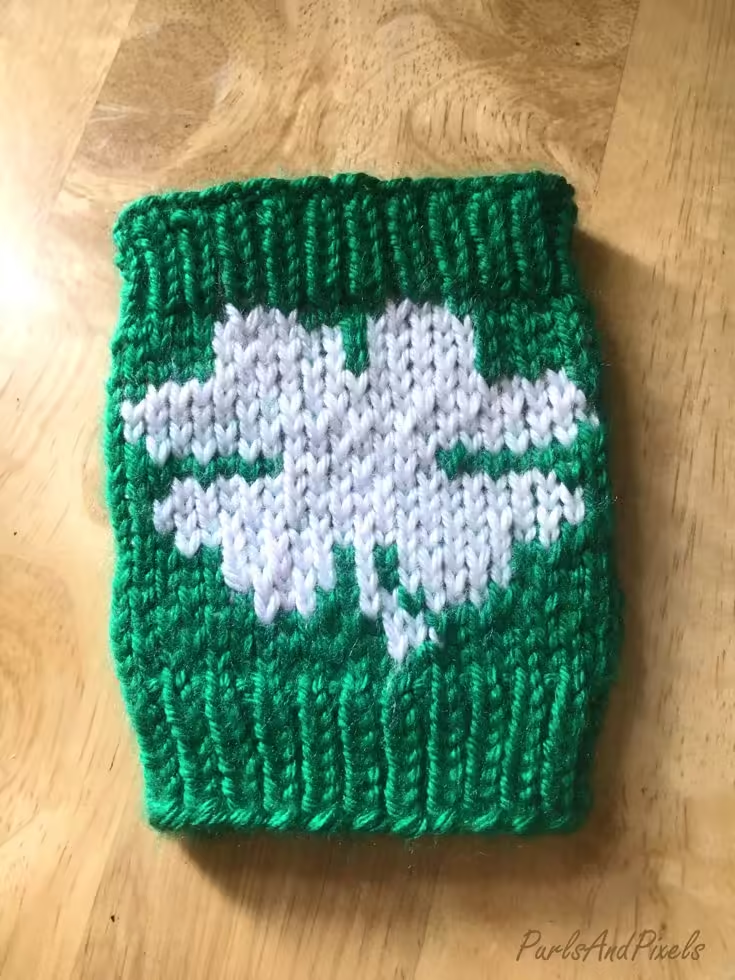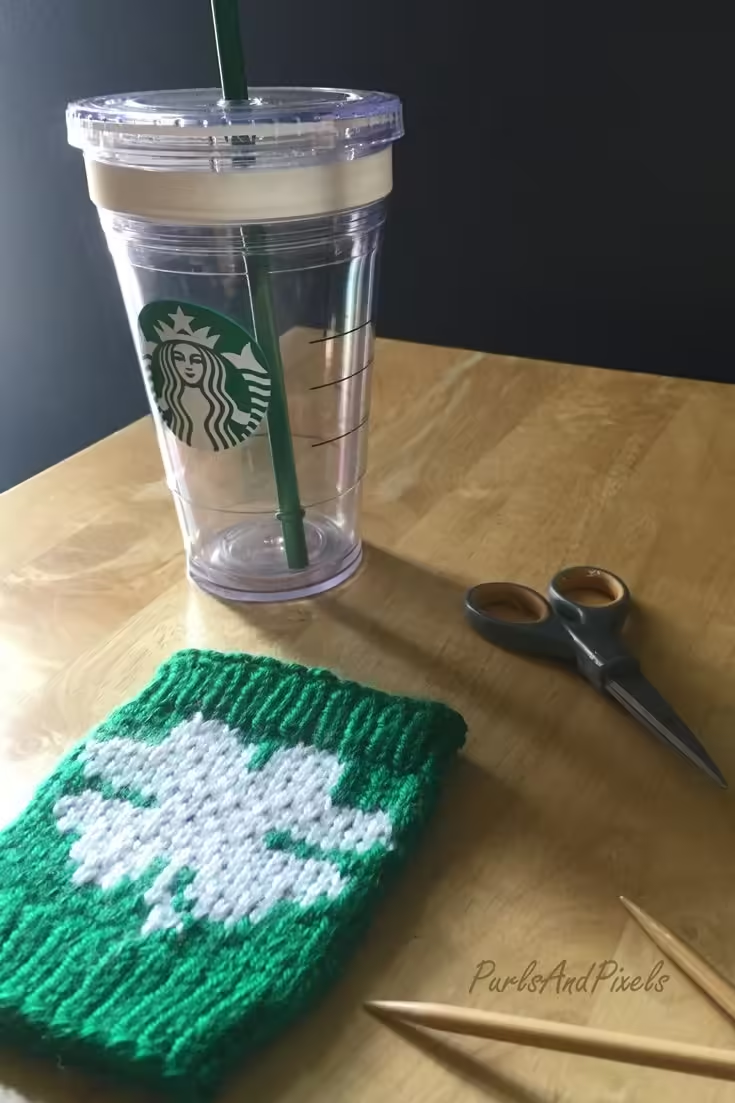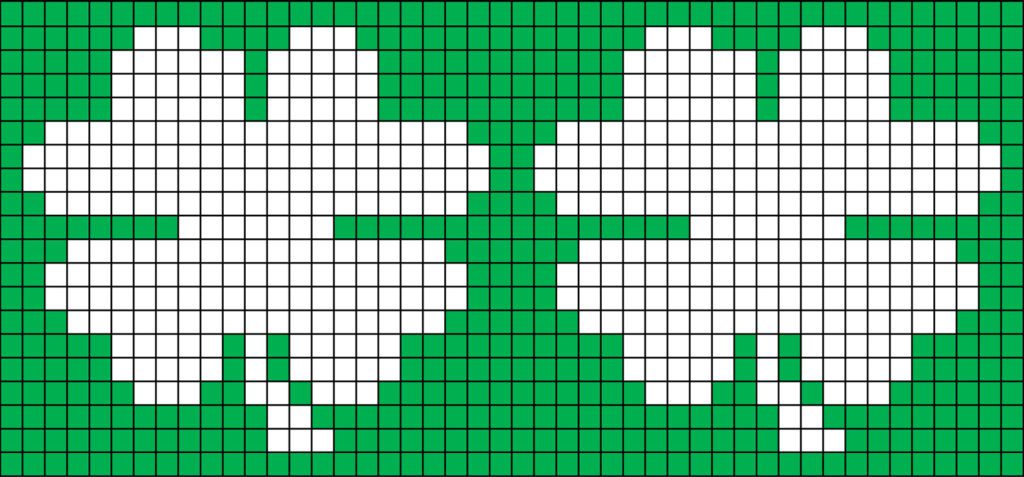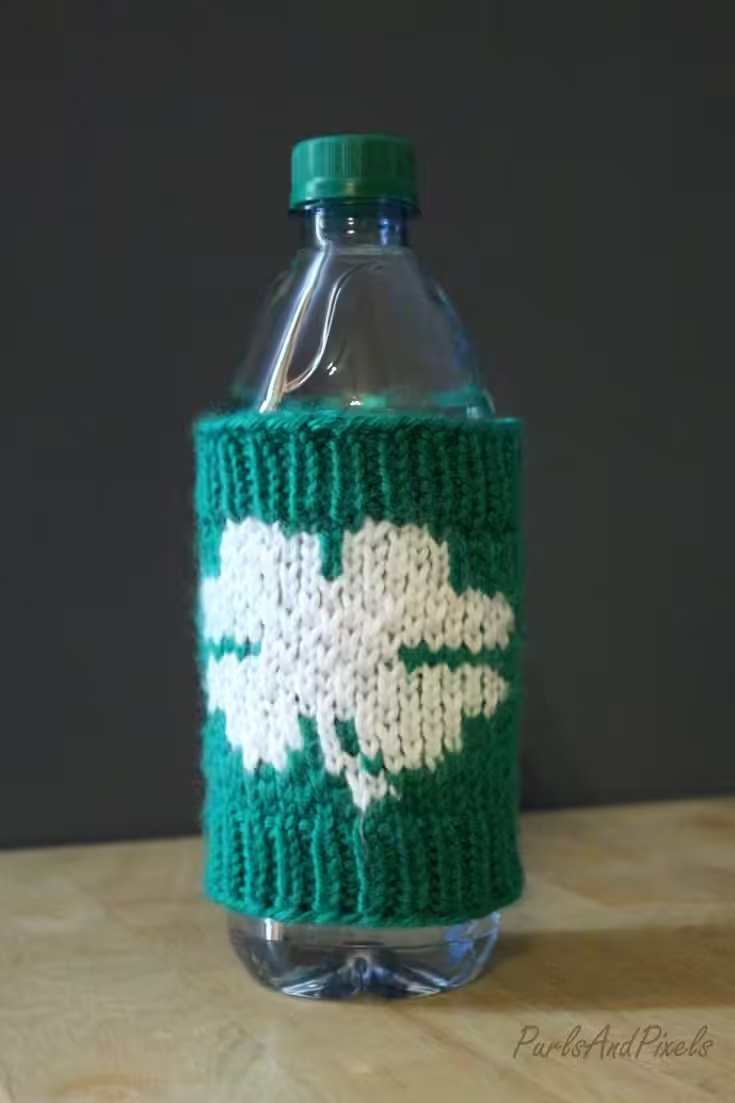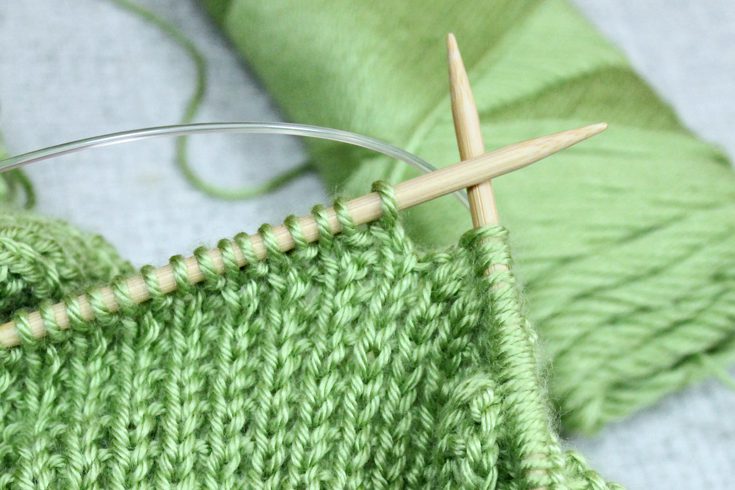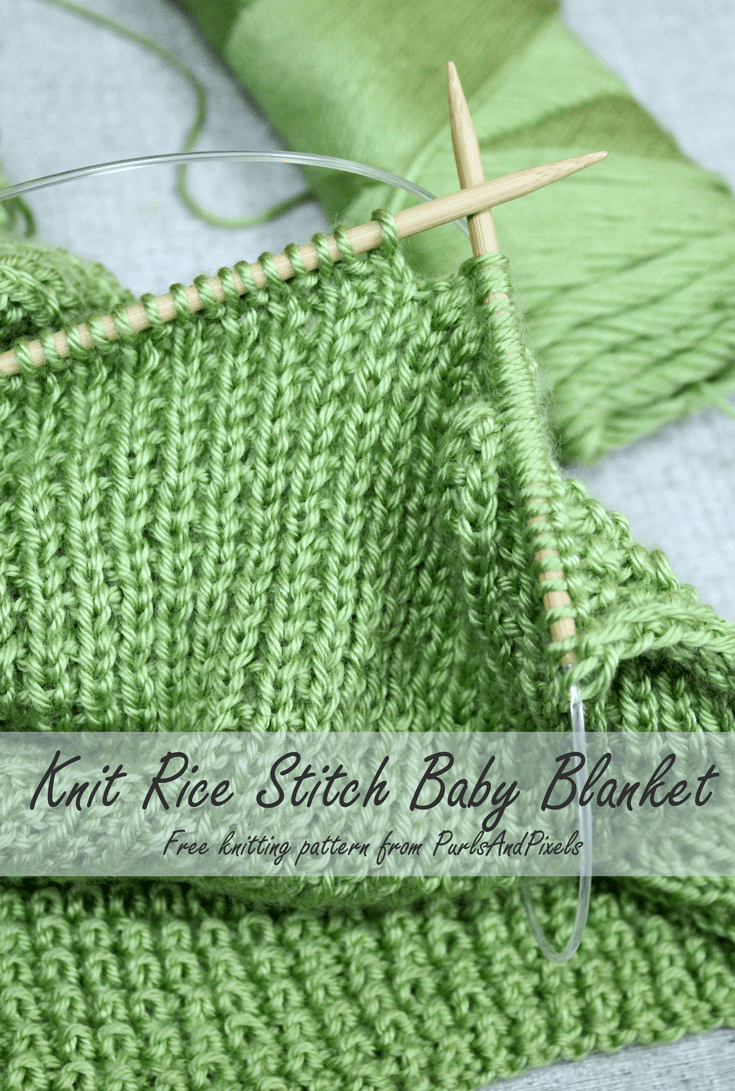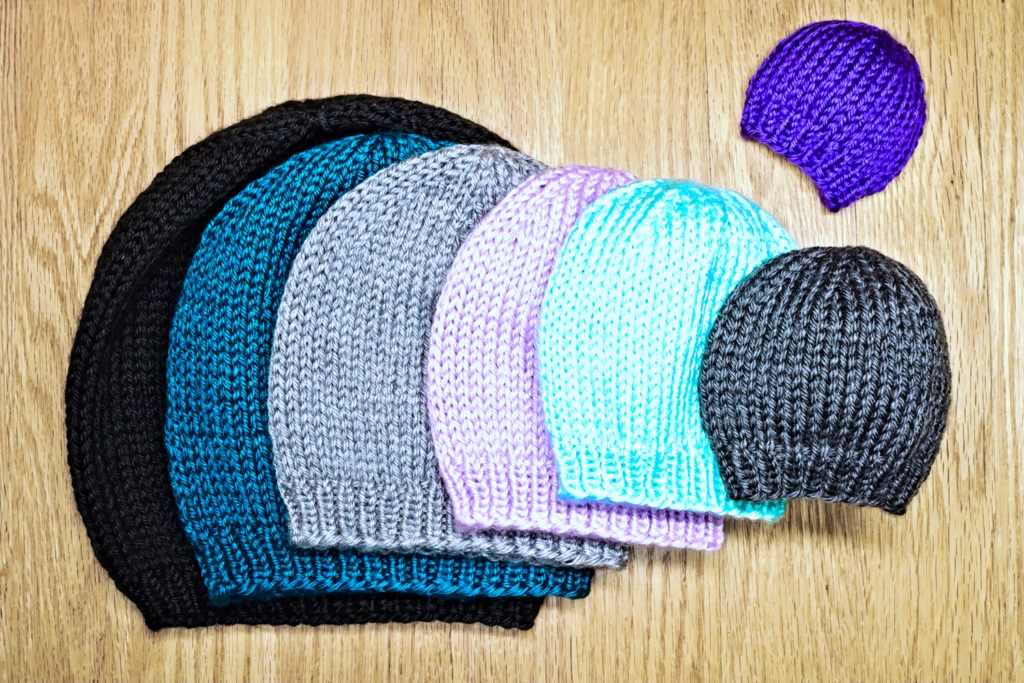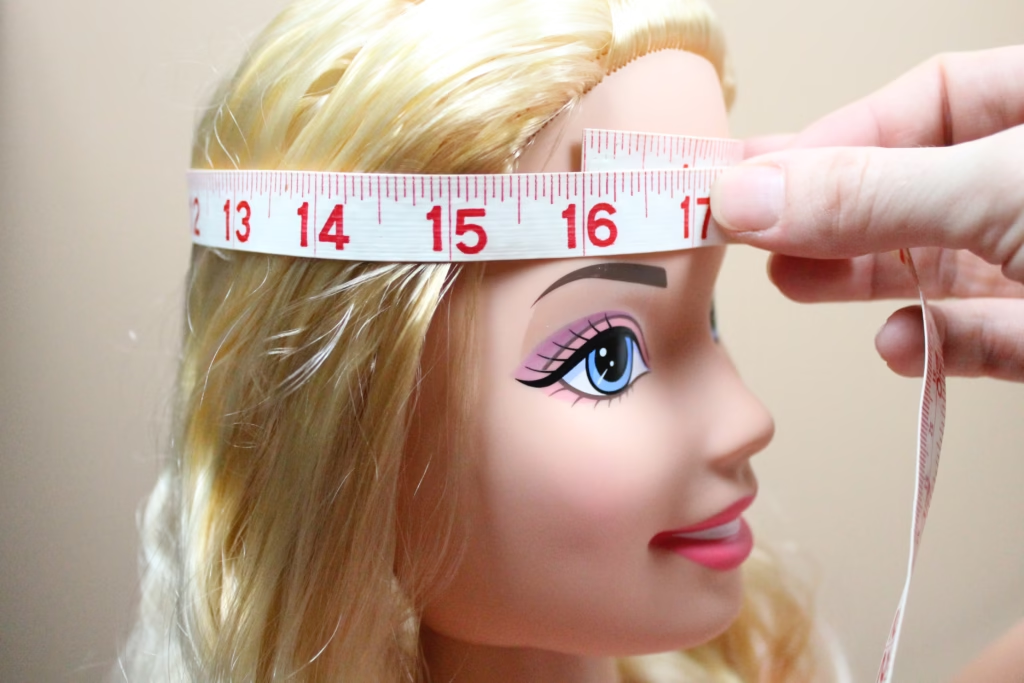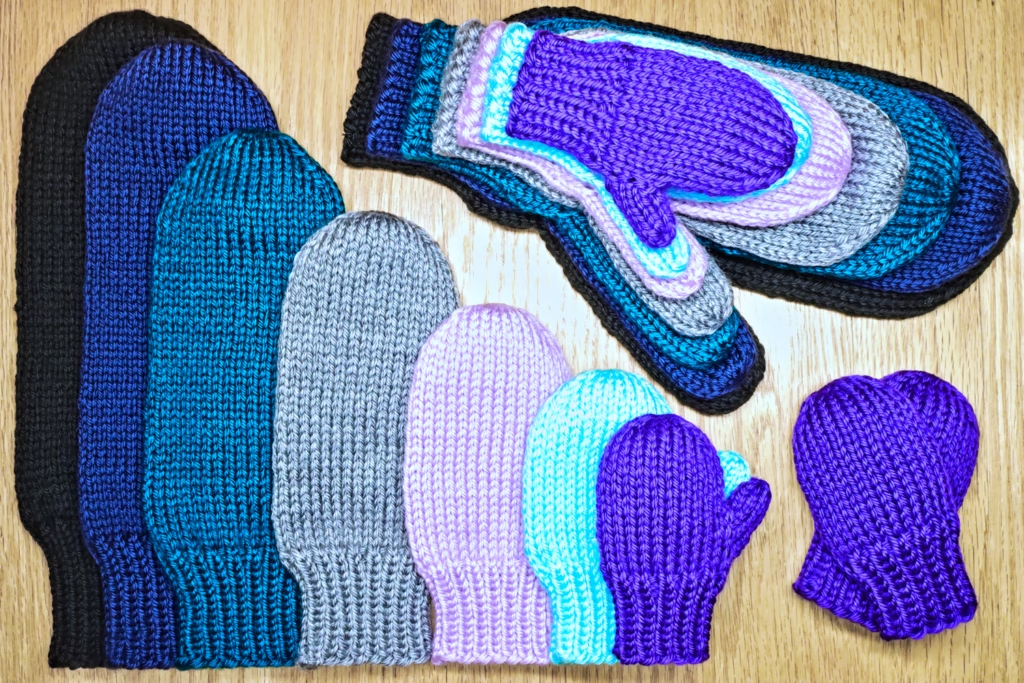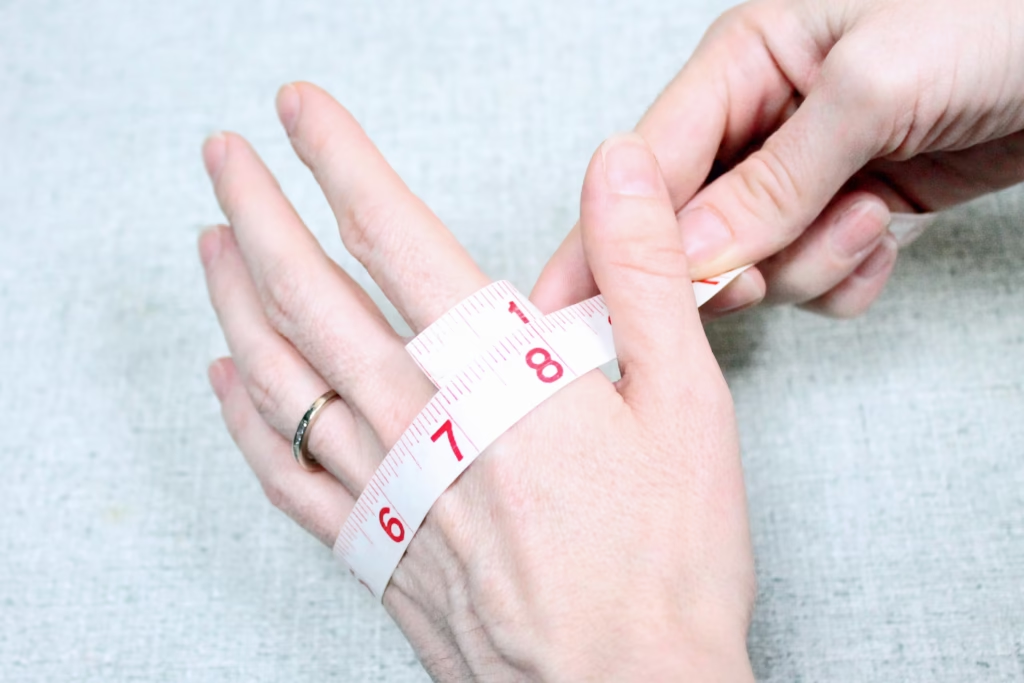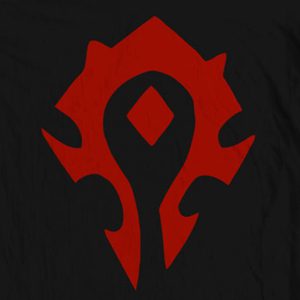Knit this little frog for your favorite person. This little knitted toy is a great project for left over yarn, using only about 20 yards.

How this Little Knit Frog is Made
This little frog is knit in three main pieces. You’ll make his body first, then make and sew his legs on. I have included instructions for crochet eyes, but you can also substitute small buttons for eyes. I chose Caron Simply Soft in Kelly Green to make this guy, but try him in your favorite worsted weight yarn and color.
Materials

- 16 yards (about .3 ounces) of Caron Simply Soft worsted weight yarn, Kelly Green (or your preferred color) [‘Color 1”]
- 4 yards of Caron Simply Soft worsted weight yarn, Charcoal (or your preferred color) [“Color 2”] OR two small dark buttons
- Small handful of Polyfill toy stuffing
- No. 5/3.75 MM circular or straight knitting needles in any length (or size needed to obtain gauge)
- Size G/4.0 MM crochet hook (optional)
- Stitch marker
- Tapestry needle
Abbreviations

- k = Knit.
- p = Purl.
- ** = Repeat the pattern between the asterisks.
- make 1 = Pick up the strand between the stitch just worked and the next stitch from front to back with the left needle and knit into the back of it.
- k2tog = Knit two together.
- ssk = Slip, slip, knit. [Slip two stitches as if to knit. Insert left needle from left to right into the fronts of the two slipped stitches. Pull working yarn through both stitches with right needle to knit together.]
- sl1pwyif = Slip one stitch purlwise with yarn in front.
- sl1kwyib = Slip one stitch knitwise with yarn in back.
- sc = single crochet
Gauge
20 stitches and 28 rows in stockinette = 4 inches on No. 5/3.75 MM needles
Instructions: Little Knit Frog
(measures approximately 3” x 2”)
Frog Body
(Knit in the round with Color 1. Use stitch marker to keep track of the beginning/ends of your rows by placing it in the first stitch of each row/round.)
Row 1: Provisionally cast on 8. Join round.
Row 2: k 8 (8 stitches).
Row 3: k 8 (8 stitches).
Row 4: k1, make 1, k2, make 1, k2, make 1, k 2, make 1, k1 (12 stitches).
Row 5: k 12 (12 stitches).
Row 6: k1, make 1, k4, make 1, k2, make 1, k 4, make 1, k1 (16 stitches).
Row 7: k 16 (16 stitches).
Row 8: k1, make 1, k6, make 1, k2, make 1, k 6, make 1, k1 (20 stitches).
Rows 9 thru 16: k 20 (20 stitches).
Row 17: k1, make 1, k8, make 1, k2, make 1, k 8, make 1, k1 (24 stitches).
Row 18: k 24 (24 stitches).
Row 19: k1, make 1, k10, make 1, k2, make 1, k 10, make 1, k1 (28 stitches).
Row 20: k 28 (28 stitches).
Row 21: k1, ssk, k8, k2tog, k2, ssk, k8, k2tog, k1 (24 stitches).
Row 22: k24 (24 stitches).
Row 23: k1, ssk, k6, k2tog, k2, ssk, k6, k2tog, k1 (20 stitches).
Row 24: k20 (20 stitches).
Row 25: k1, ssk, k4, k2tog, k2, ssk, k4, k2tog, k1 (16 stitches).
Row 26: k16 (16 stitches).
Row 27: k1, ssk, k2, k2tog, k2, ssk, k2, k2tog, k1 (12 stitches).
Row 28: k12 (12 stitches).
Row 29: ssk, k2tog, ssk, k2tog (4 stitches).
Cut yarn leaving 12-inch tail and bind off with Kitchener’s stitch.
Stuff the frog body with a small bit of Polyfill, but don’t overstuff.
Move the stitches from your provisional cast on to knitting needles, and close the frog with Kitchener’s stitch. Weave in loose ends.
Frog Back Legs
(Knit flat with Color 1, turning after each row. Make 2.)
Row 1: Cast on 11 stitches. Turn.
Row 2: sl1pwyif, p10 (11 stitches).
Row 3: sl1kwyib, k10 (11 stitches).
Row 4: sl1pwyif, p10 (11 stitches).
Row 5: sl1kwyib, make 1, k9, make 1, k1 (13 stitches).
Row 6: sl1pwyif, p12 (13 stitches).
Row 7: sl1kwyib, k12 (13 stitches).
Row 8: sl1pwyif, p 12 (13 stitches).
Row 9: sl1kwyib, ssk, k7, k2tog, k1 (11 stitches).
Row 10: sl1pwyif, p10 (11 stitches).
Row 11: sl1kwyib, ssk, k5, k2tog, k1 (9 stitches).
Row 12: sl1pwyif, p8 (9 stitches).
Row 13: sl1kwyib, ssk, k3, k2tog, k1 (7 stitches).
Row 14: sl1pwyif, p2tog, k1, p2tog, k1 (5 stitches).
Row 15: sl1kwyib, k4 (5 stitches).
Row 16: sl1pwyif, p4 (5 stitches).

Row 17: Bind off.
Cut yarn, leaving a 12-inch tail and pull through.
Allow the legs to curl up into themselves a bit, as they naturally will. Sew both legs to the narrow end of the frog, leaving some of the curled edges inside.
Frog Front Legs
(Knit flat with Color 1, turning after each row. Make 1.)
Row 1: Cast on 14 stitches. Turn.
Row 2: sl1pwyif, p13 (14 stitches).
Row 3: sl1kwyib, k13 (14 stitches).
Row 4: sl1pwyif, p13 (14 stitches).

Row 5: Bind off in knit stitch pattern.
Cut yarn, leaving a 12-inch tail, and pull through. Allow the fabric to curl long-ways, with the purl-side facing out. With darning needle, sew to body in a “v” shape, with the point of the “v” ending under the frog’s “chin.” Sew one tight stitch across the middle point (the bottom of the “v”) to make the front feet appear separate. Weave in loose ends.
Frog Eyes
(Crochet with Color 2. Make 2.)
Row 1: Chain 2.
Row 2: sc4 into 1st chain.







Print the Free Little Knit Frog Pattern
Printable little frog knitting pattern PDF by Liz @PurlsAndPixels
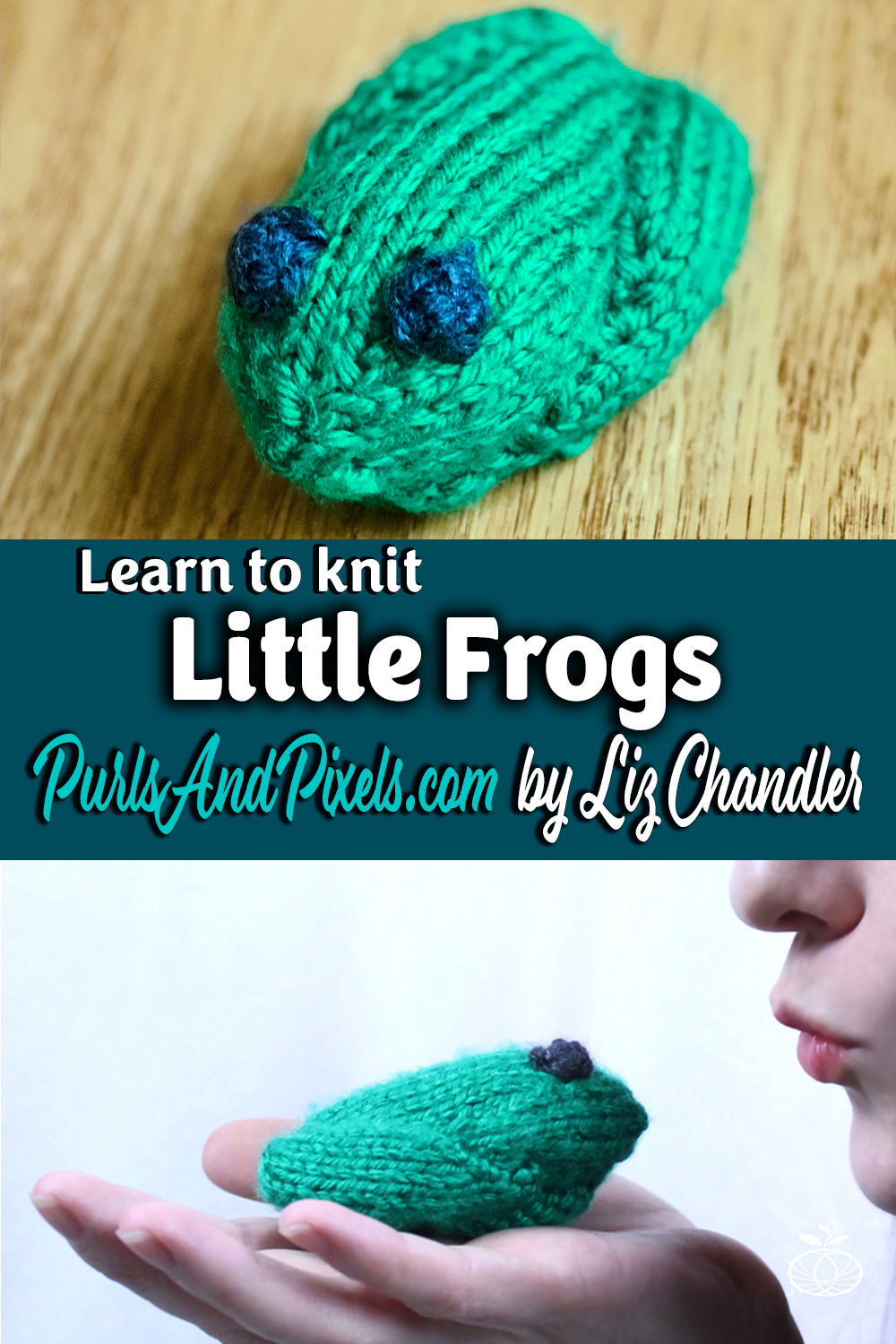
©2017, Liz Chandler of PurlsAndPixels. This pattern is for personal use, gifting, and charitable donation of completed items. You may also sell items made using this pattern. Do not copy and sell the pattern or use it for any commercial purpose. Thank you!
Find this on Ravelry to save for later.
I’d love to see how he turns out! Share your little knit frog pictures by tagging @PurlsAndPixels on Twitter and Instagram.
More Knitting Patterns You’ll Love
Don’t Miss a Stitch 💌
Love cozy knitting projects? Follow along on YouTube, Pinterest, and Instagram,
or join the newsletter for more free patterns and gentle knitting tips.

